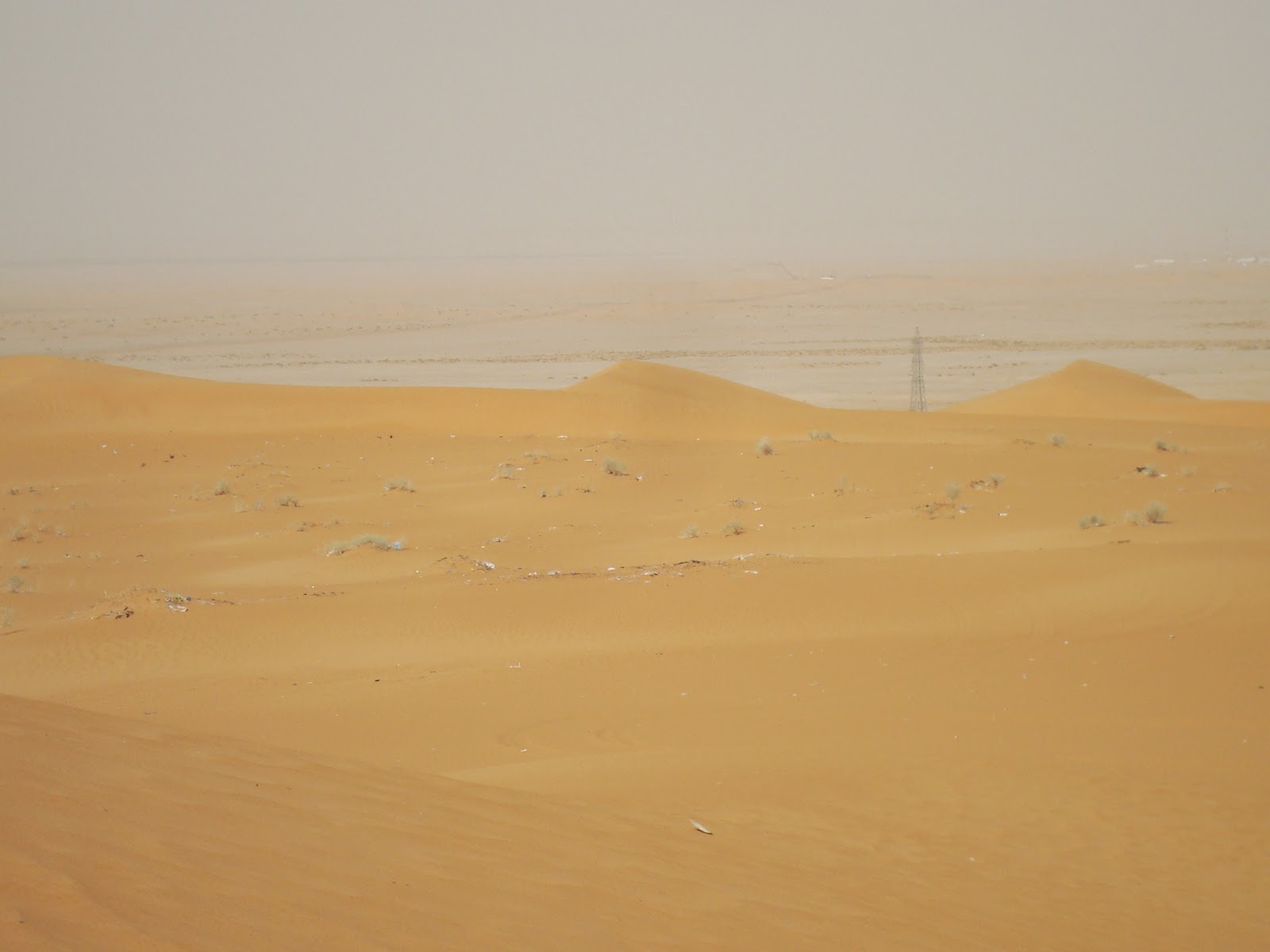There are two things you need to know about camels before
you try to film them. The first is they’re very curious. The second is they
spit. It’s estimated there are over a million camels in Saudi Arabia, and we
went to meet some of these one-humped wonders while shooting in Al Thumama desert
outside Riyadh.
Our guide, a quiet man in a four-wheel drive, was running
late, and made no excuses for his tardiness. By the time he arrived we’d been
waiting in the lobby for an hour and were all pretty irritated, especially my
boss.
The densely-packed houses soon gave way to smaller communities and eventually to Bedouin tents, and we forgot about being pissed off as we shot off-road and into the red desert sand. The car lurched in all directions as we tore through the dunes, sinking and peaking and leaning as we held on for dear life. At one point we headed up a hill that looked to me to be about 45 degrees; from my position in the middle of the back seat I could hold onto the door handle without reaching. I had been sweating in my abaya and hijab before we left the city; by the time we reached our remote location in the Thumama desert I was drenched, and it wasn’t from the heat.


The densely-packed houses soon gave way to smaller communities and eventually to Bedouin tents, and we forgot about being pissed off as we shot off-road and into the red desert sand. The car lurched in all directions as we tore through the dunes, sinking and peaking and leaning as we held on for dear life. At one point we headed up a hill that looked to me to be about 45 degrees; from my position in the middle of the back seat I could hold onto the door handle without reaching. I had been sweating in my abaya and hijab before we left the city; by the time we reached our remote location in the Thumama desert I was drenched, and it wasn’t from the heat.


When we extricated our shaking selves from the car, the first thing I noticed was the rubbish. Plastic bags, old Coke bottles, and food wrappers poked through the sand everywhere we looked. Even if we’d wanted to frame out the garbage, we couldn’t have. Despite this, the desert was magnificent. Through the heat haze, golden sands stretched to the horizon. The wind had painted magnificent patterns – lines and circles and dips and peaks – waves in a sea of sand. I was so hot in the 50 degree heat (that's celsius) I took off my hijab and let the breeze grab my hair. It was the best feeling ever. Our driver wasn’t Saudi so didn’t mind.
 |
| Camel caravan |

Camels were domesticated thousands of years ago by frankincense traders, who trained them to make the long and tortuous journey from southern Arabia to the northern regions of the Middle East. They’re valued not only as a source of transportation, but also for their milk, meat, wool and hides – and for racing.
They may be funny looking creatures, but they’re incredibly well designed for life in the desert. Aside from their underbite and constantly masticating jaws, they have two rows of long curly eyelashes that help keep out sand and dust, and thick, bushy eyebrows to shield their eyes from the sun. Their thick matted fur not only protects the camel from cold and heat, but stops it perspiring so it doesn’t lose water. Arabian (dromedary) camels only have one hump, which contain fatty deposits that when metabolized can release one gram of water for every gram of fat. When food and water become scarce, the camel extracts energy from their fat stores. They galumph along, moving both feet on one side of the body, then both feet on the other - side to side like ships of the desert.


We pulled up alongside one of thousands of enclosures which stretched across the flat sand. The people who tend to the animals live on-site in canvas tents, with little more than a stretcher for sleeping, a seat, a bowl for washing, and a couple of containers of water inside. The camels themselves came in all shades, aside from the colour camel - brown, black, grey, tan, and white. They all had branding marks, or wusum, to indicate who owns them.
 |
| Wusum |

The camels had a field day with the film equipment, checking out the windsock over the boom microphone, along with the camera itself. We all learned not to move towards them too fast though - those suckers can spit long distances.
That trip to the desert was the highlight of my time in Saudi. I loved the unfamiliarity of it all - the excruciating heat of the sun, the beauty of the sand stretching for miles in every direction, the noise and the smell of the camels. It was an amazing way to end our trip. The next day we flew to Austria, where the freedom to wear shorts and a t-shirt made me slightly uncomfortable at first, and then back to real life in Toronto.
We never were invited to Prince Alwaleed's desert camp. Maybe next time?

































